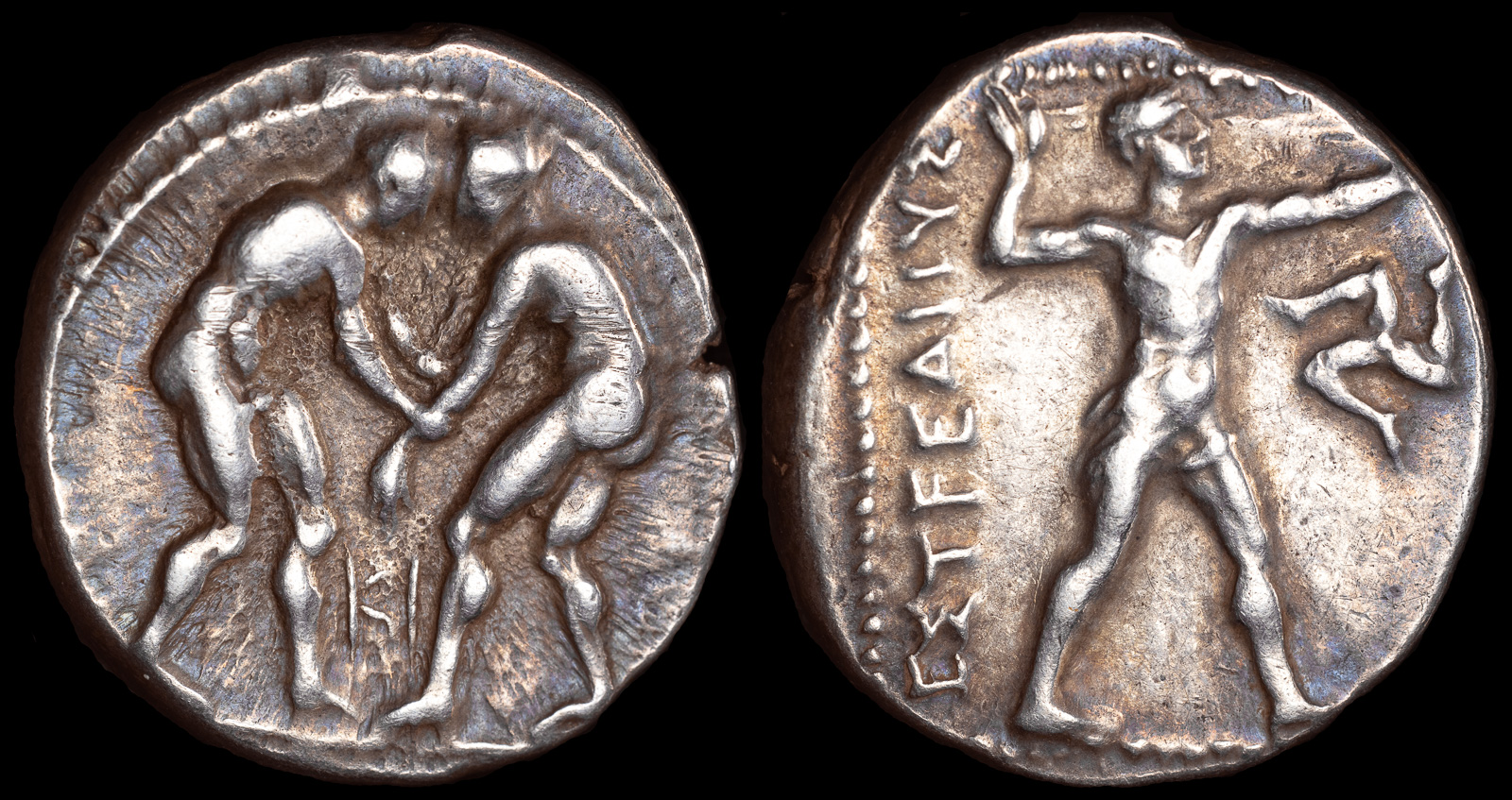Wrestler
View All Tags
The rules and style of Greek wrestling were somewhat different from modern wrestling. Matches were held on soft, sandy ground, often in a circular or square area. The goal was to either pin the opponent’s back to the ground or throw them, demonstrating superiority in both strength and technique. Wrestlers typically competed in nude to emphasize the ideal of the human form and the athleticism of the body. Competitors often used various grappling techniques, such as throws, holds, and joint locks, and the matches could last for several minutes, testing endurance and skill.
Wrestling was considered a demonstration of both physical strength and mental strategy. The sport required an athlete to possess not only brute force but also an understanding of leverage, balance, and timing. Ancient Greeks placed significant emphasis on training for wrestling, with young men often practicing in gymnasiums (gymnasion) under the supervision of skilled instructors (paidotribes). Training would include exercises to build strength, flexibility, and endurance, as well as technical drills to refine wrestling techniques.
Beyond the athleticism, wrestling held strong cultural and symbolic value. It was frequently depicted in Greek art and literature, often portraying the heroism of famous wrestlers, such as Herakles and Theseus, who were both legendary figures in Greek myth. Wrestling also served as a rite of passage for young men, representing the transition from adolescence to adulthood, and was a way to prepare for the physical demands of war. The sport reinforced values of competition, honor, and the pursuit of excellence, and successful wrestlers enjoyed widespread admiration, with victors receiving prestigious prizes such as olive wreaths or statues erected in their honor.

Pamphylia, Aspendos
Circa 380-325 BCE
AR stater, 21mm, 10.78g, 12h
Obv.: Two wrestlers grappling; KI between.
Rev.: EΣTFEΔIIYΣ; Slinger in throwing stance right; triskeles to right; all within pelleted square border.
Tekin Series 4; SNG BN 104